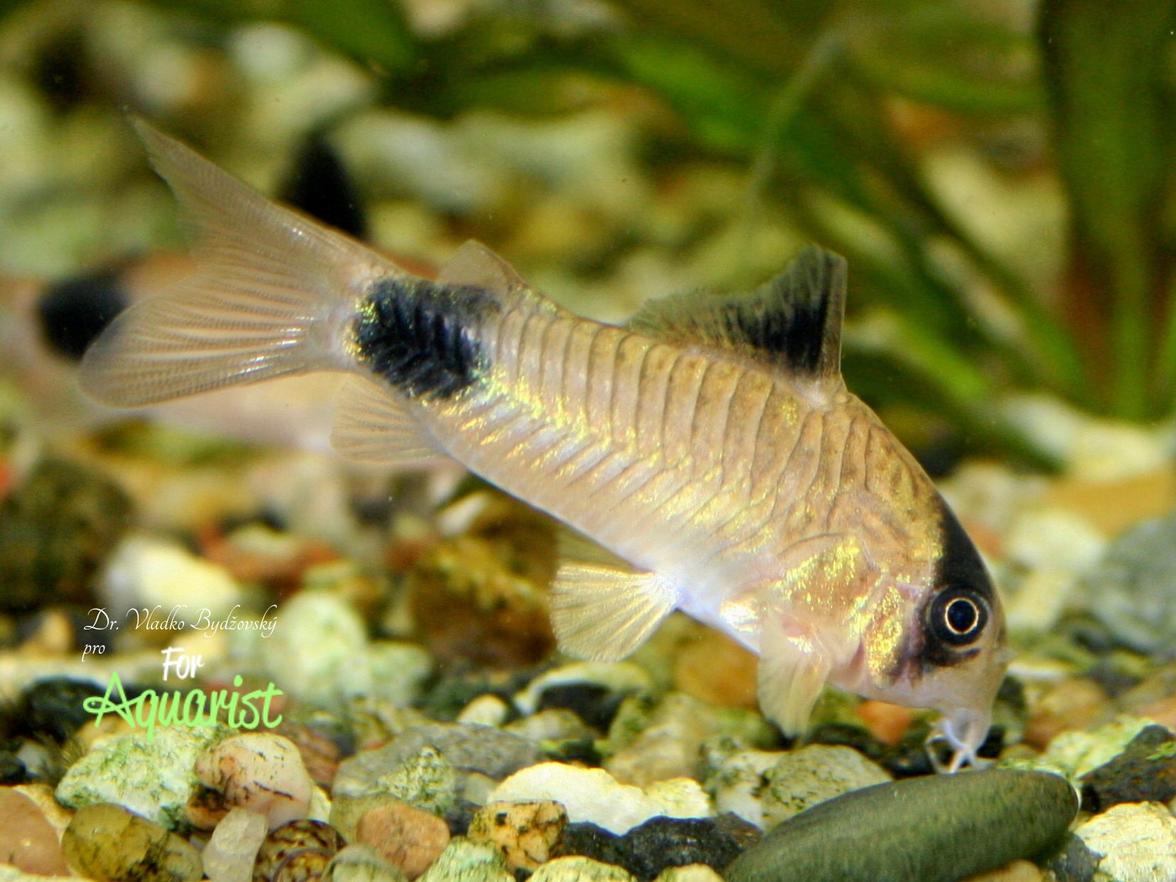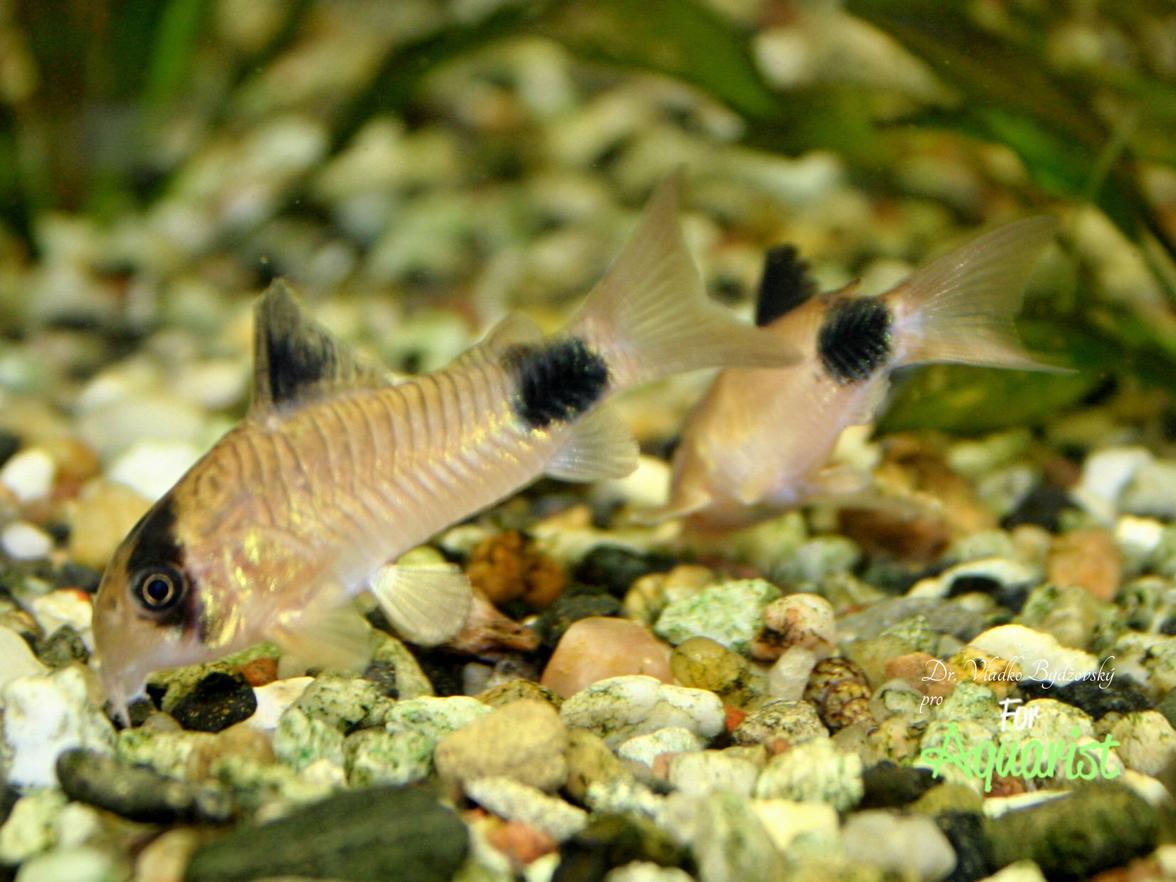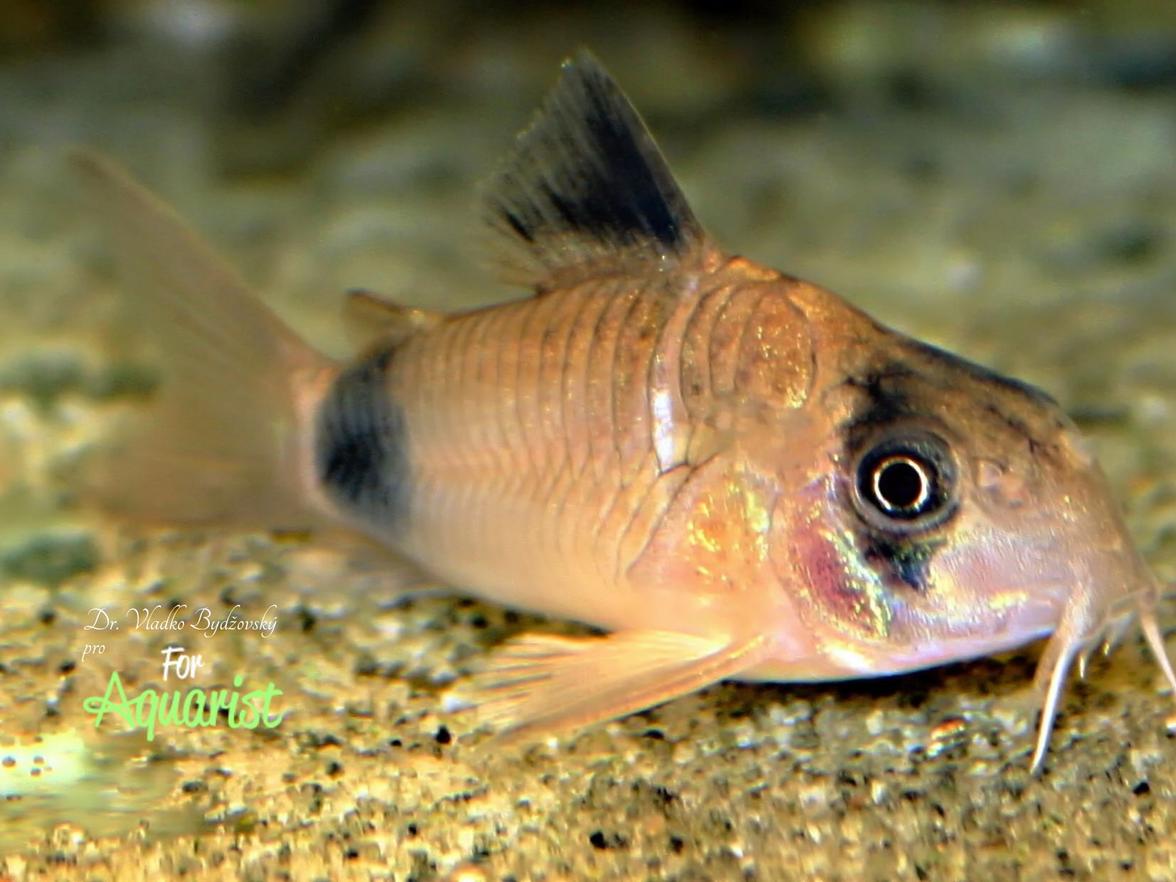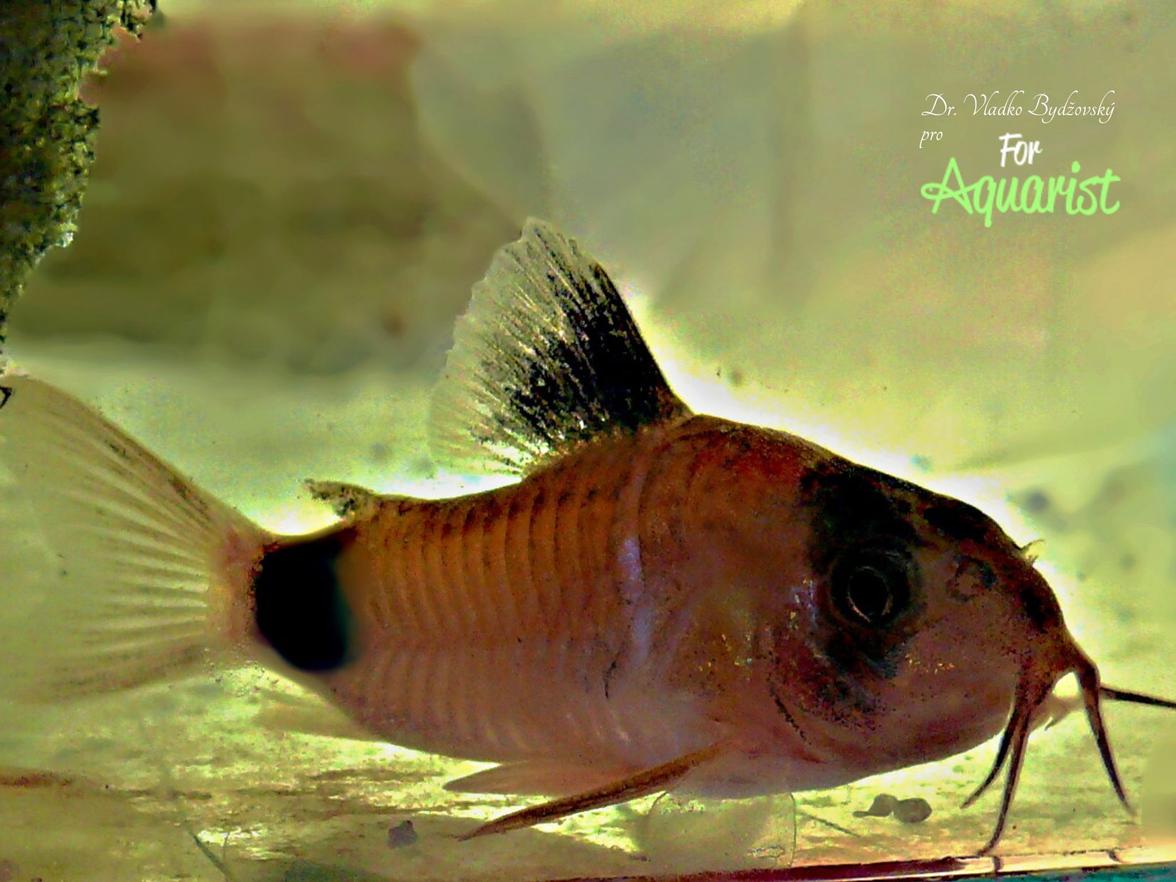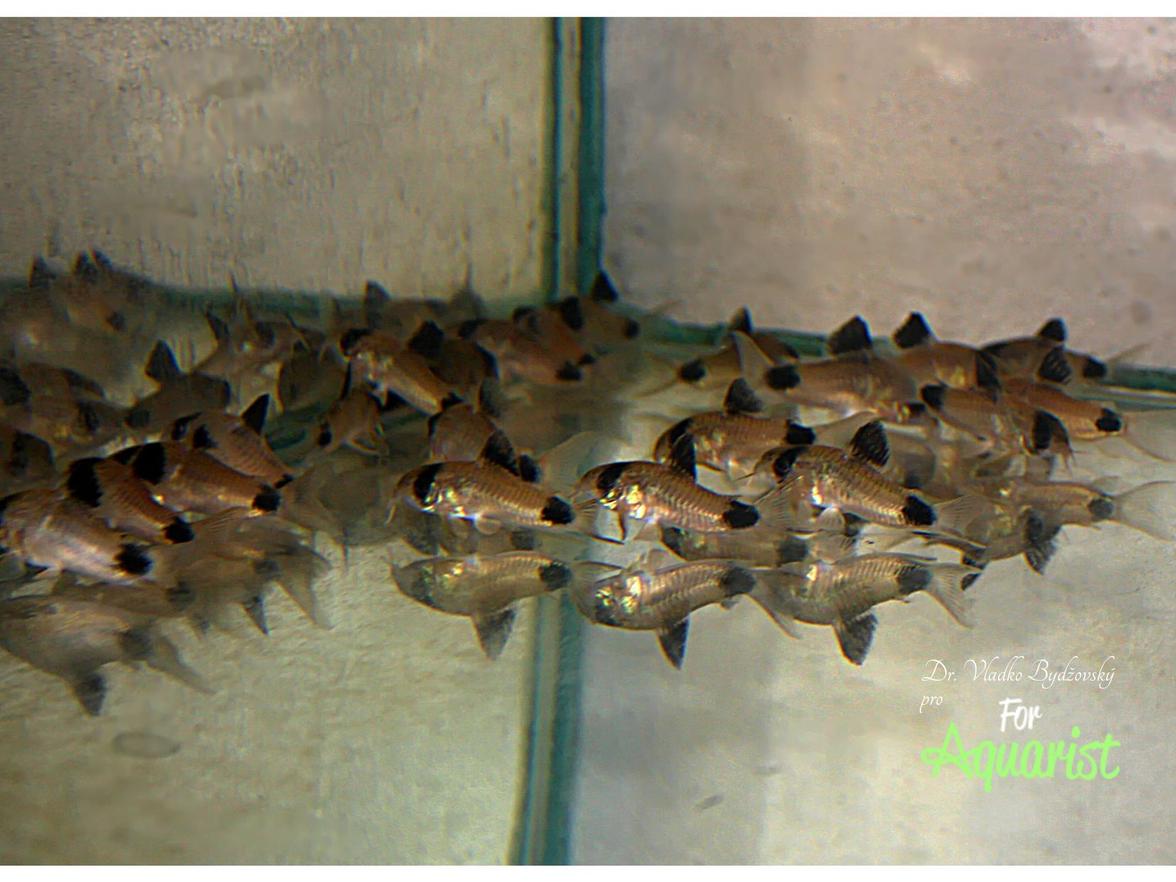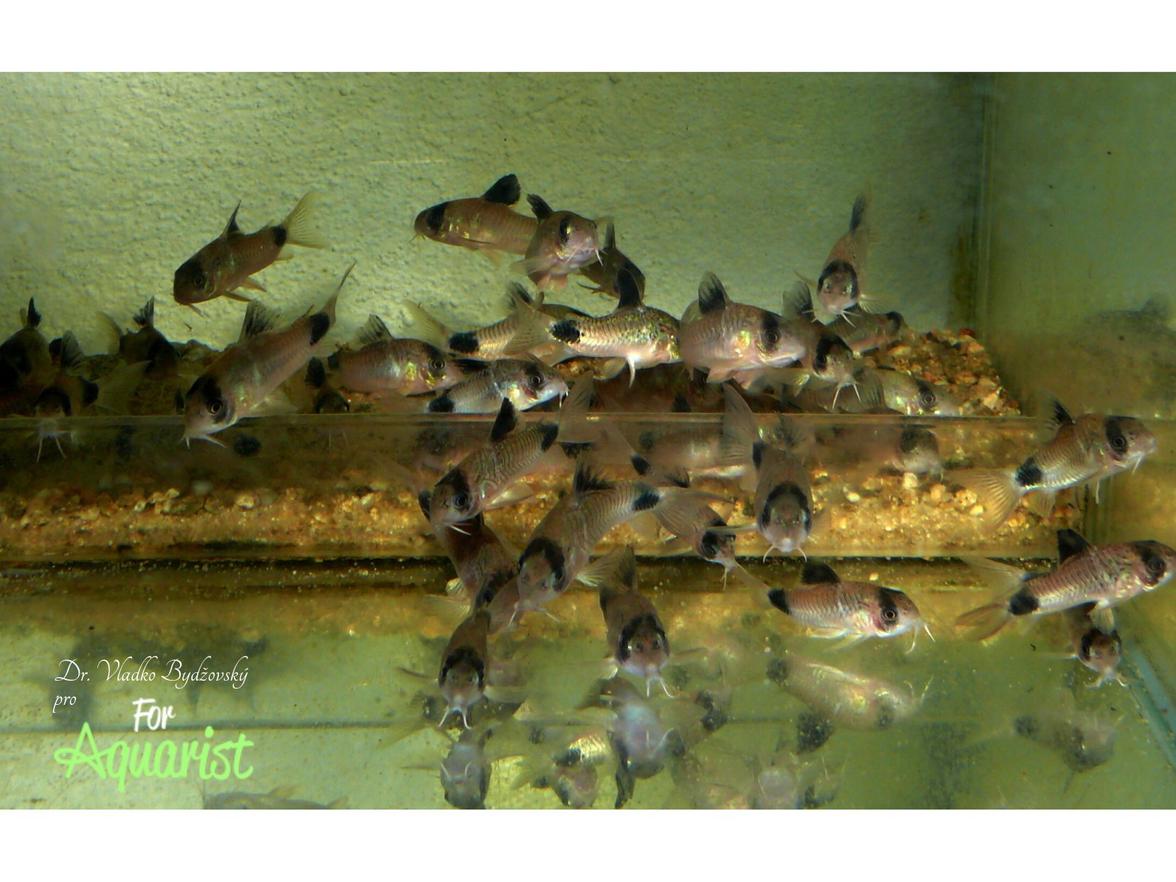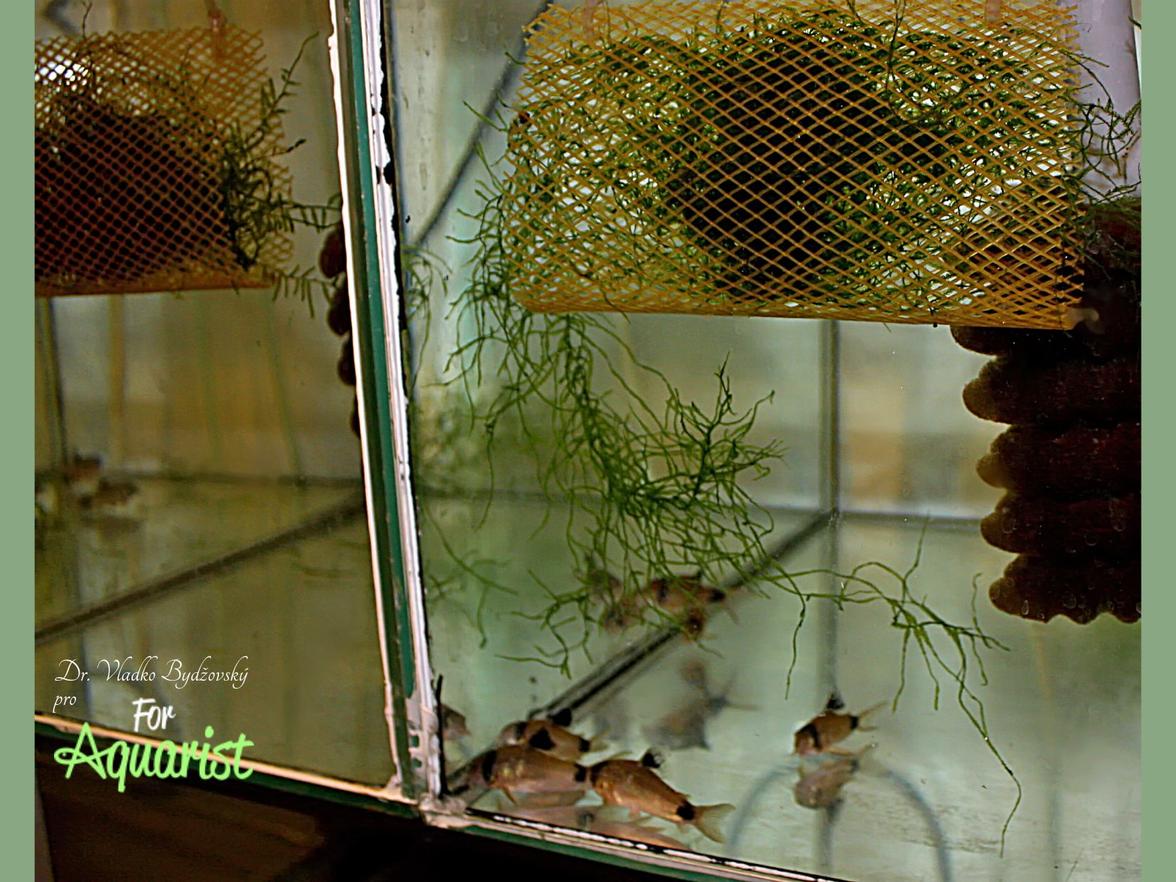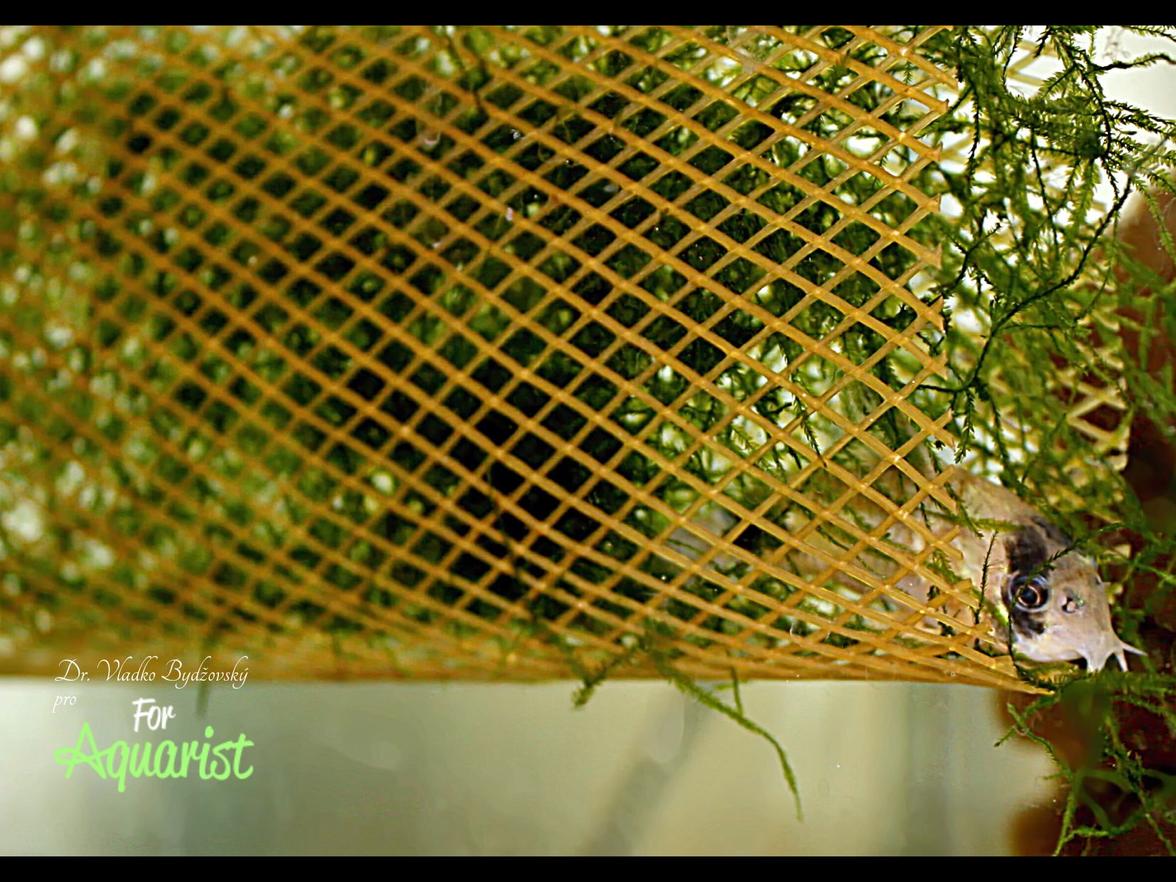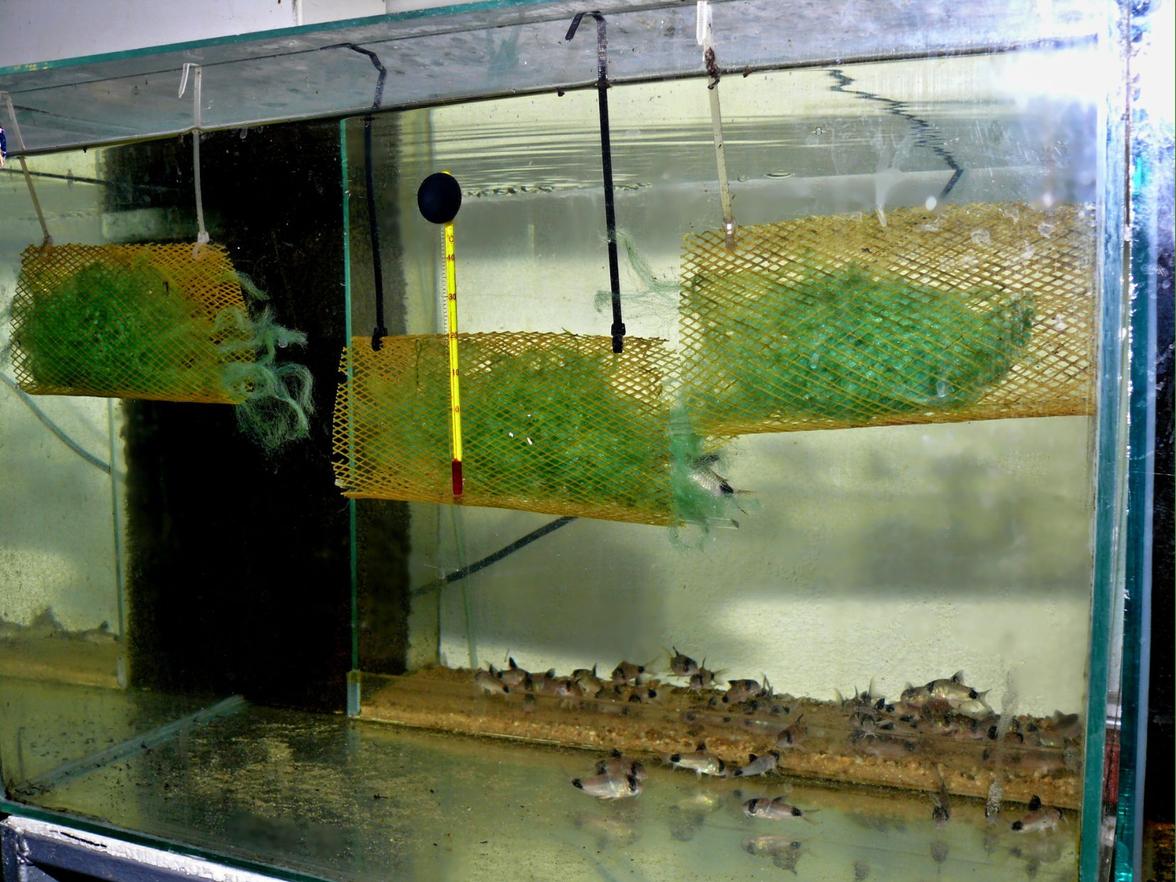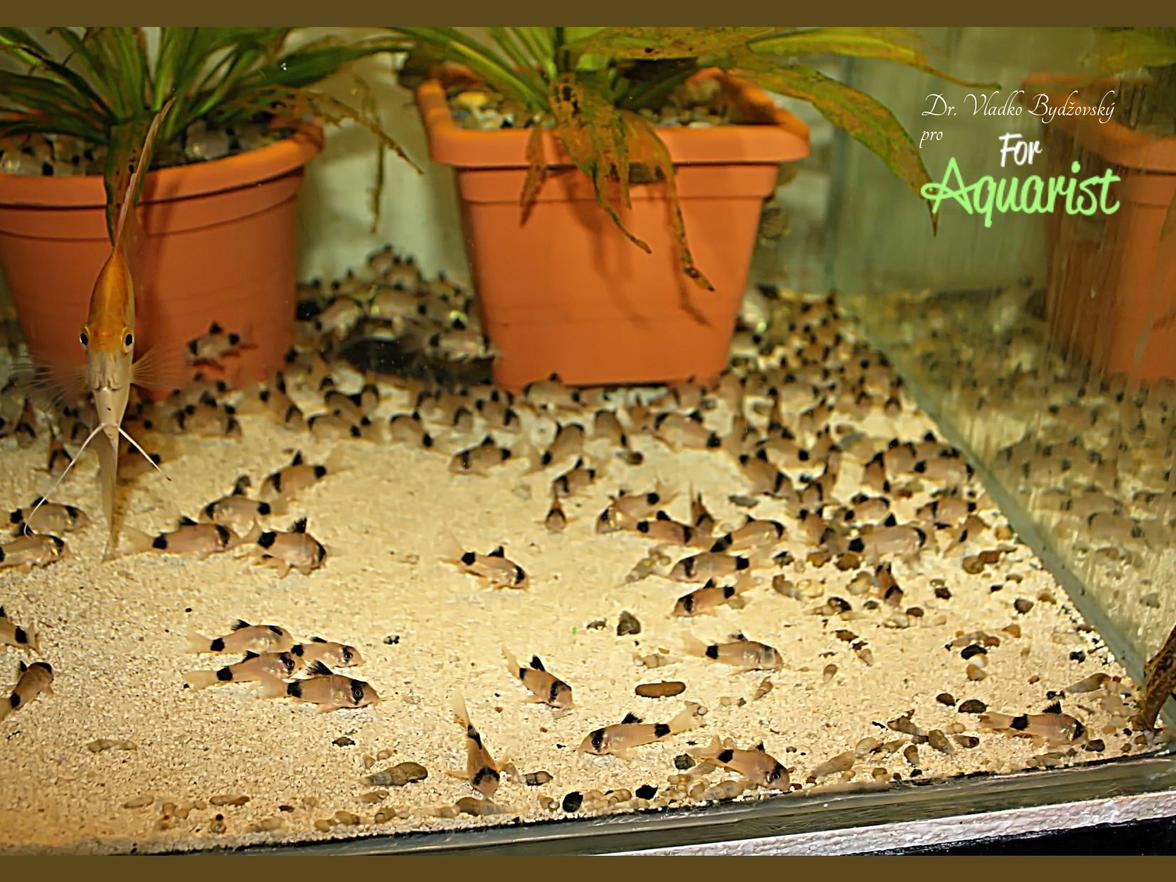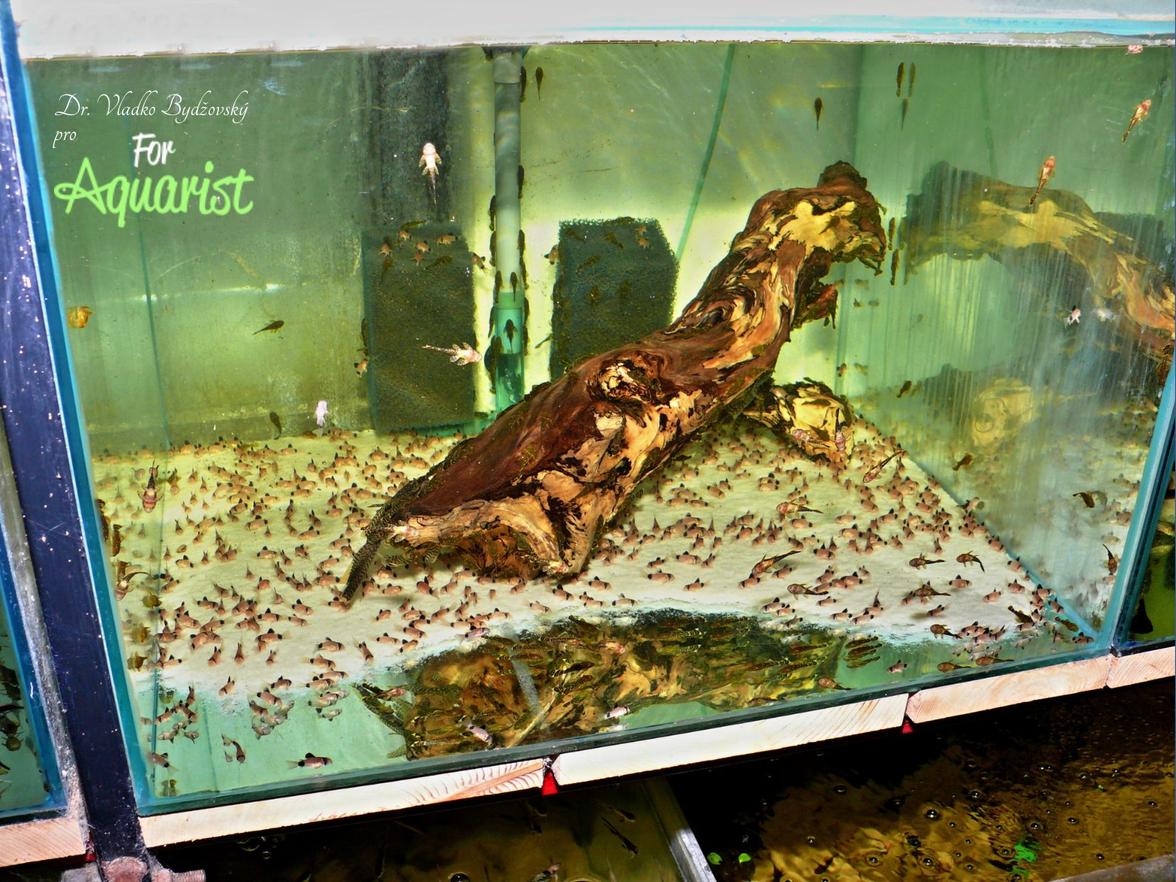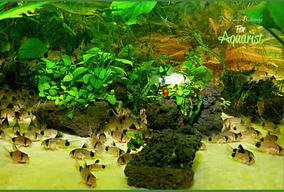The panda corydoras is a calm, popular aquarium fish. In this article, you will learn everything essential about its care, feeding, and breeding.
Corydoras are among the most popular inhabitants of home aquariums, appreciated for their generally trouble-free care. The panda cory, in particular, gained popularity in the aquarium hobby only in the 1980s. Its name comes from its distinctive coloration, which closely resembles that of the giant panda. Two varieties are known: one with a smaller spot and the other with a larger one at the base of the tail (caudal peduncle). In the latter, the spot extends onto the adipose fin.
Habitat
The species primarily inhabits clear, oxygen-rich streams flowing from the mountainous regions of Peru. It can also be found in swampy lowland rainforest streams with shallow water and low oxygen levels.
To survive in such environments, these fish have adapted to breathe through their intestines. They gulp atmospheric air, which passes through the digestive tract to the mid-intestine. The intestinal lining is densely packed with fine capillaries, allowing oxygen absorption into the bloodstream and the expulsion of carbon dioxide back into the gut and then out through the anus. This adaptation enables survival even in poorly oxygenated waters.
The first specimens were collected from Aguas Amarillas and the Río Llullapichis, a tributary of the Río Pachitea in eastern Peru. The water in these areas is relatively soft (7 °dGH, 2 °KH), slightly alkaline (pH 7.5), and cool (around 22 °C).
Other individuals were later found in the Río Ucayali and its tributary, the Río Pachitea. In their natural habitat, panda corys coexist with various tetras such as Astyanax bimaculatus, Ctenobrycon spilurus, Gymnocorymbus thayeri, Hemigrammus ocellifer, and Moenkhausia oligolepis. Other Corydoras species are also found there, including Corydoras aeneus (Osteogaster aeneus) and Corydoras elegans (Gastrodermus elegans), as well as loricariids like Rineloricaria lanceolata and Panaque nigrolineatus. Cichlids from the Crenicichla saxatilis group have also been recorded in these regions.
Description
Currently, these fish are among the most popular Corydoras species for beginner and intermediate aquarists. They are classic schooling fish.
Their mouths are surrounded by six barbels, which are important sensory tools containing tactile, olfactory, and gustatory receptors.
Compared to other catfish species, their eyes are relatively large and well-developed. They also possess a sensitive Weberian apparatus, which plays a role in detecting vibrations, pressure changes, and sounds—these signals are transmitted from the swim bladder to the inner ear via nerve connections.
Females are usually larger, heavier-bodied, and have fuller bellies. Their dorsal fins are smaller and more rounded, while males have pointed dorsal fins and a slimmer build.
Aquarium for "pandas"
The ideal is to use an aquarium with a volume of 60-80 or possibly even a bit more liters. In addition to hiding places (ceramics, roots, stones), numerous plant tangles and enough swimming space are ideal. For good and trouble-free breeding, we ensure that we always have clean and well-oxygenated water free of bacteria in the aquarium.
Fish belong to the so-called schooling fish, we always acquire more individuals, preferably 6-8 or more. We put fine sand on the bottom so that the fish do not injure their very important barbels for life.
Water
The ideal temperature is around 22-25 °C, although the fish tolerate a temperature range of 18-35 °C. For breeding, the ideal water hardness is around 5-12°dGH, 2-3°dKH, but they can tolerate water with a hardness of 0-22°dGH without any problems. It is good for the water to flow at least slightly.
Feeding
Those who see Corydoras merely as bottom scavengers are unlikely to succeed in breeding them. Proper feeding is essential—not only for health but also for encouraging spawning. Panda corys are typical omnivores but show a preference for planktonic food. Artemia nauplii, blackworms, frozen mosquito larvae, and whiteworms (1–2 times per week) noticeably promote growth and stimulate breeding activity, increasing egg production. Grindal worms and nematodes are also beneficial but often overlooked. Occasionally, flake or tablet foods can be offered.
What makes these fish a delight for observant aquarists is their appetite and enthusiasm—panda corys enjoy nearly everything offered. Above all, dietary variety is key to their well-being and reproductive success.
Breeding
While keeping panda corys is relatively easy, raising their fry is more demanding. Spawning typically takes place at night or in the early morning. During mating, the female forms a temporary pouch with her pelvic fins in the classic T-position, into which she collects eggs. She then attaches them to aquarium glass or plant leaves. Spawning success depends on environmental conditions.
A female usually lays 45 to 60 eggs, which hatch within 4 to 6 days. The parents provide no care, so it is best to remove them after spawning or, alternatively, relocate the eggs to a separate rearing tank. Like some tetras (Nematobrycon lacortei, Nannostomus mortenthaleri), panda corys can spawn continuously throughout the year, with shorter or longer breaks.
Creative aquarists use various spawning substrates such as nylon mops or Java moss. Keep the breeding group in optimal tank conditions and rotate substrates as needed. A 20–25 liter tank is sufficient for a group of 4–6 fish; for 8–10 individuals, a 40–50 liter aquarium is ideal.
For feeding fry, newly hatched brine shrimp (Artemia nauplii) are a reliable starter food. Fine powdered food is rarely used nowadays; if so, it's often scalded with hot water to prevent damage to the delicate fry. Maintaining a relatively low water level (20–25 cm) supports their auxiliary intestinal respiration. The young grow rapidly—up to 2–2.5 cm within the first month—after which their growth rate slows.
Images
- The male is always slimmer and somewhat smaller than the female.
- Panda corys are bottom fish, which is reflected in the food they usually find on the bottom.
- The barbels of armored catfish are very important for their life, so we put fine sand at the bottom to prevent damage to them.
- Young female 7 months old.
- We can arrange a species aquarium for pandas, where the plants will thrive.
- If we want to wipe the battleships, it is advisable to rather acquire a large flock of them.
- Sometimes it is advantageous to place sand in the back part of the aquarium, leaving the front part without sand. This makes it easier to care for the bottom, and food residues and fish waste are more easily siphoned off. Sand, with its bacteria, plays an irreplaceable role in water quality.
- For swabbing, we use swabs without a fitted bottom. As a friction substrate, Java moss is ideal.
- The Java moss placed this way can be easily replaced, while the fish swim peacefully in the breeding tank.
- One of the options for swabbing pandas on a large scale.
- A flock of bred armoured catfish is always a nice sight.
- Roots generally serve as a good shelter not only for catfish.
Note ForAquarist: If you enjoyed the article and are considering a purchase, take a look at our portal’s offer.
